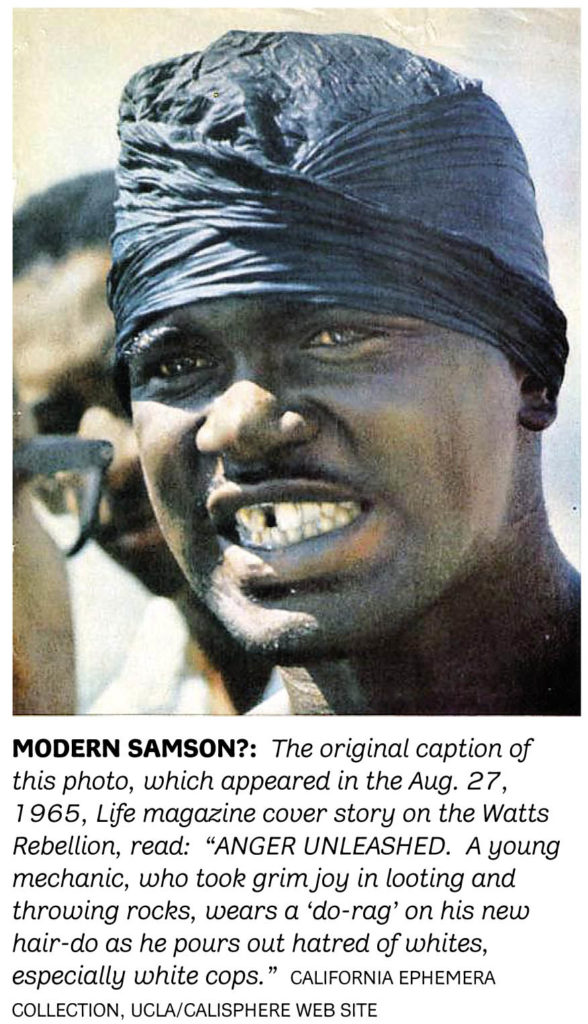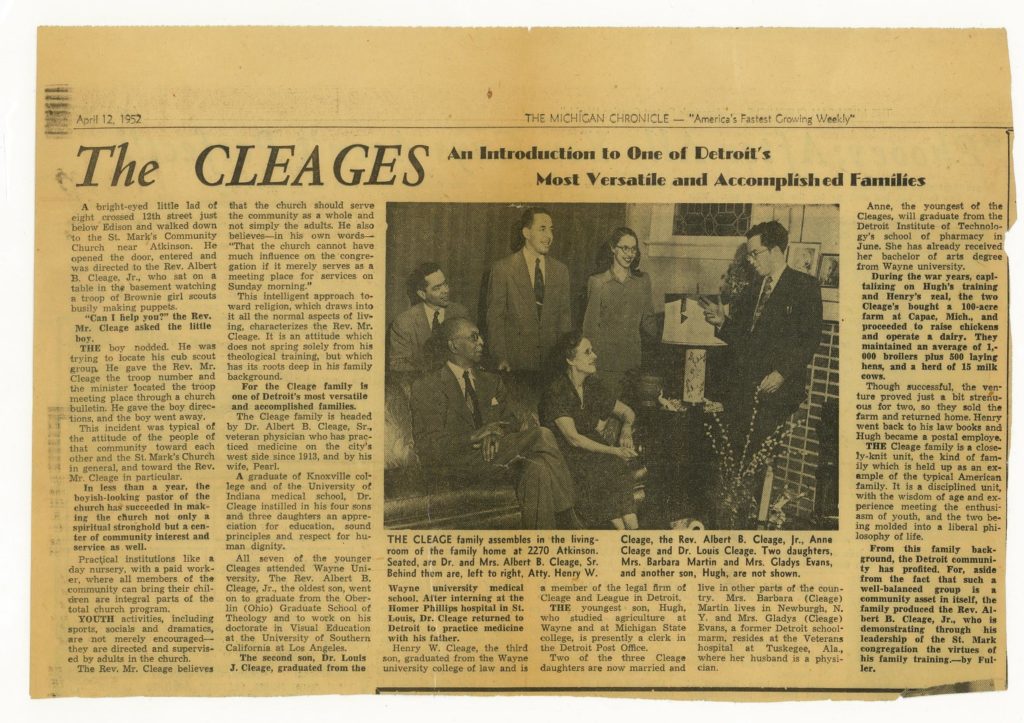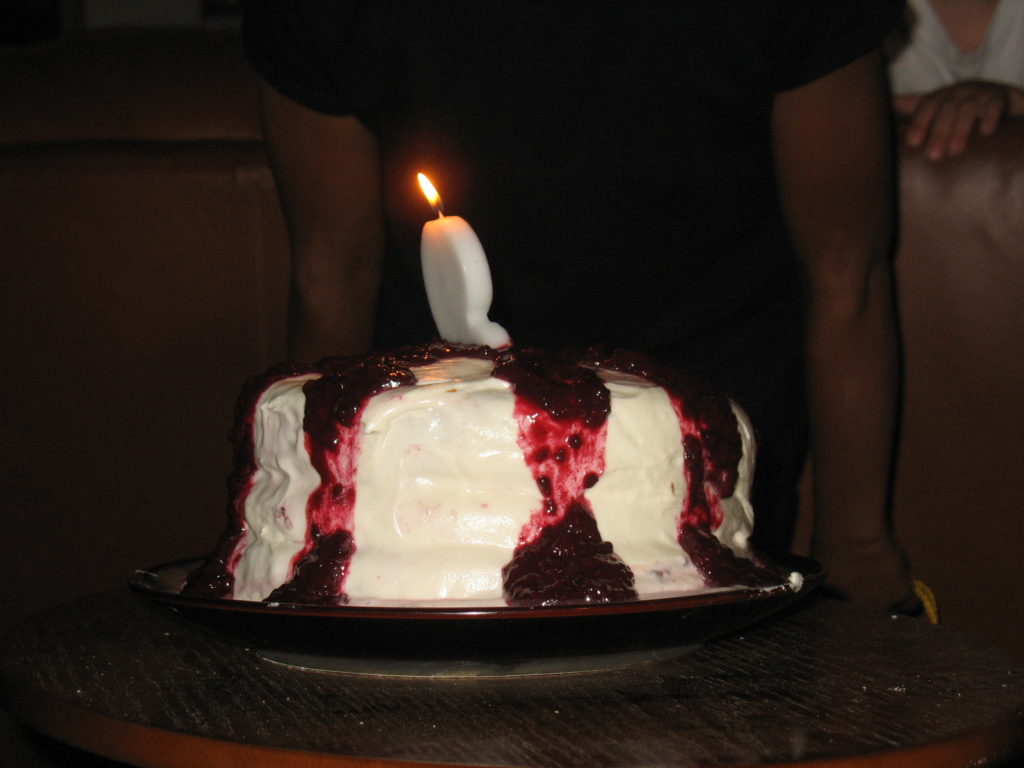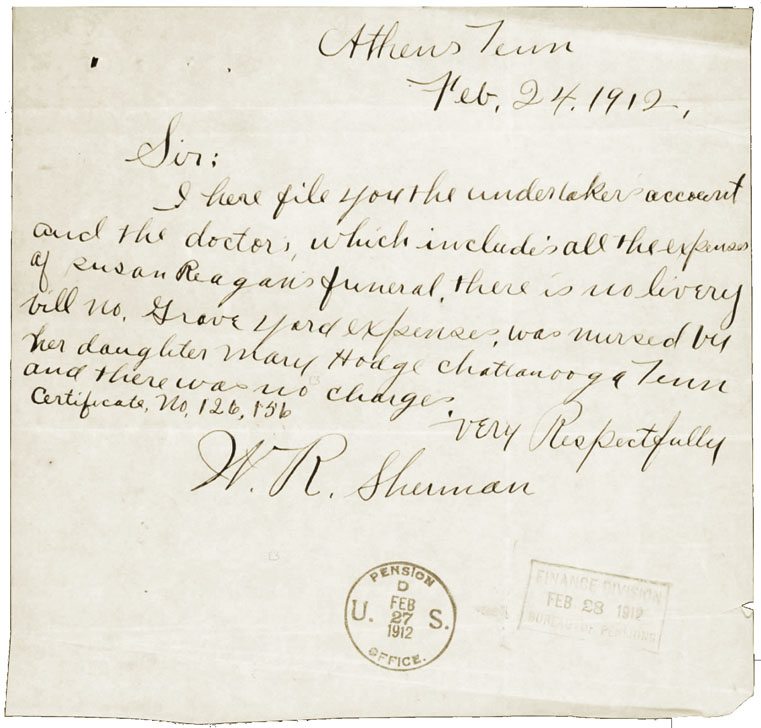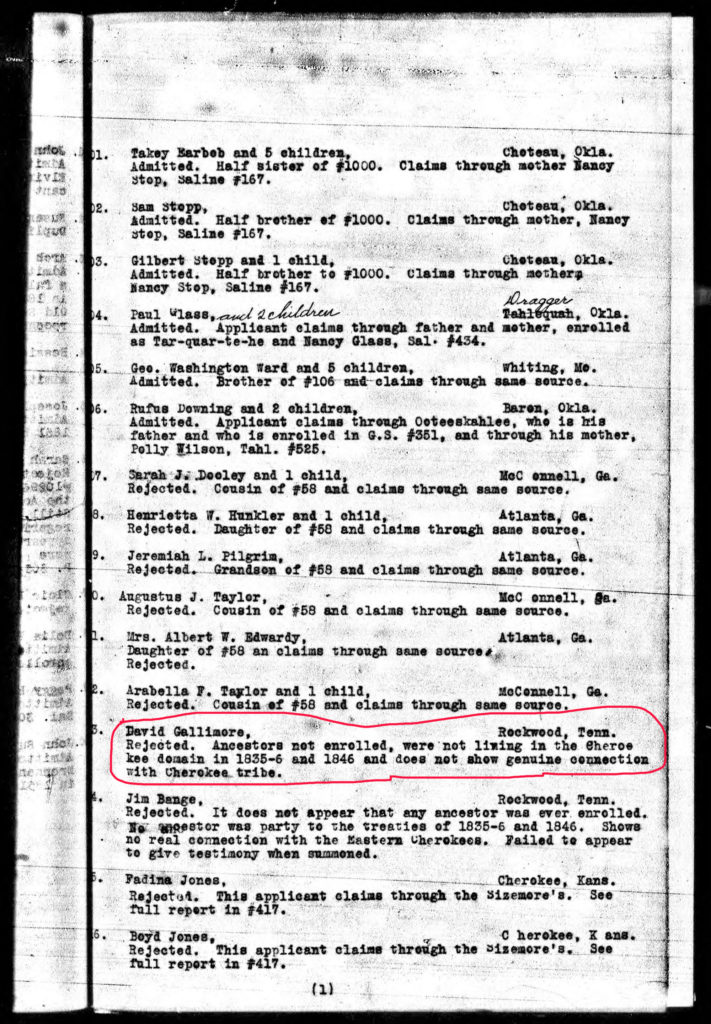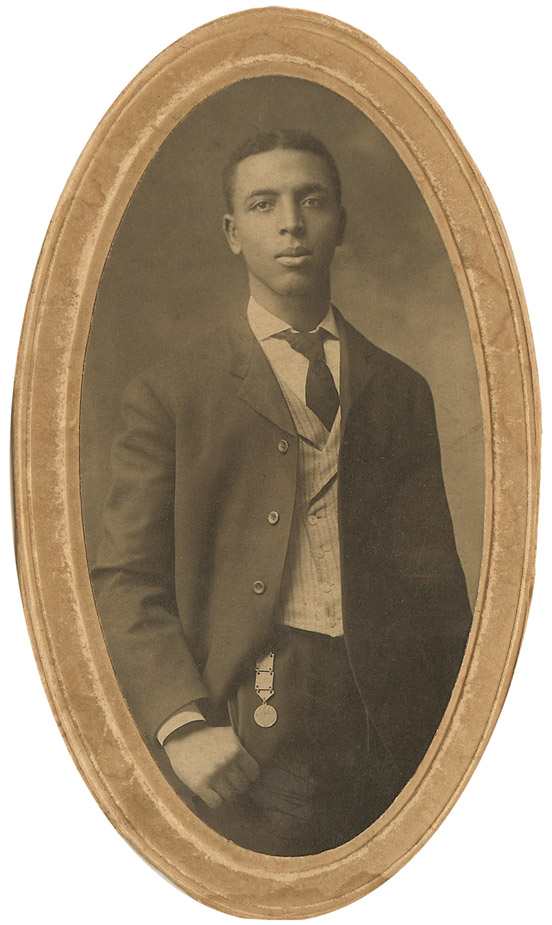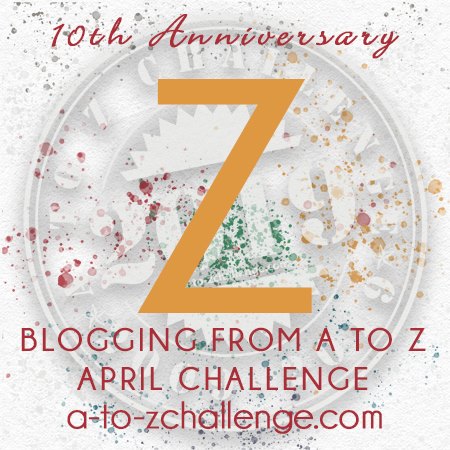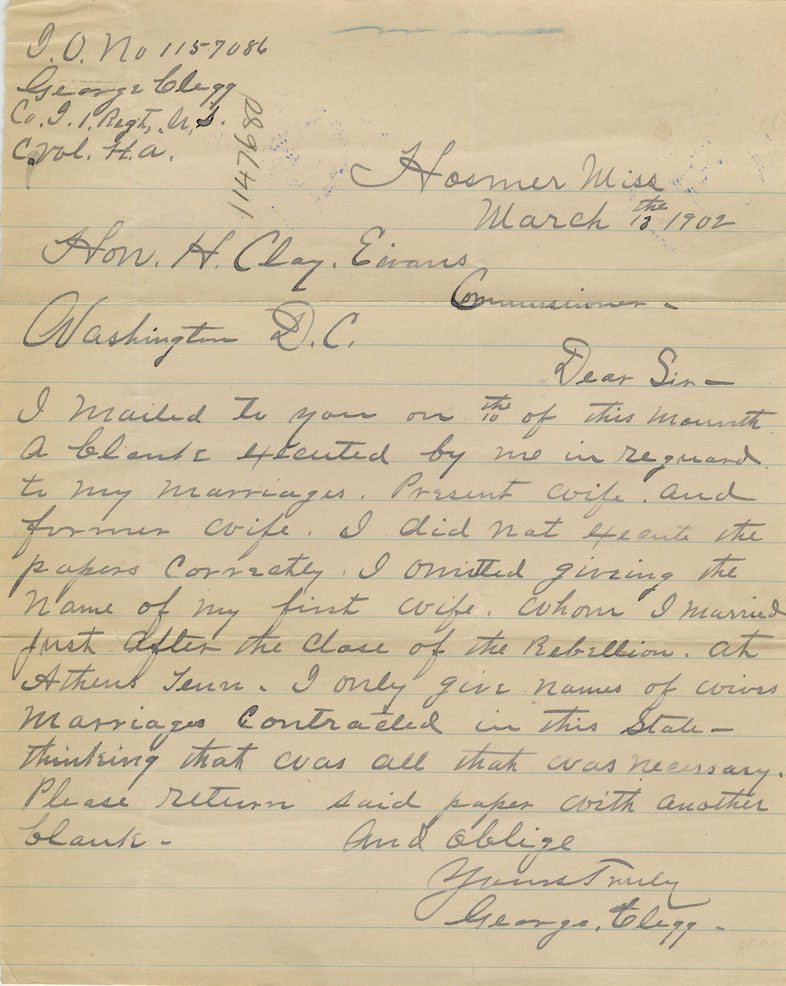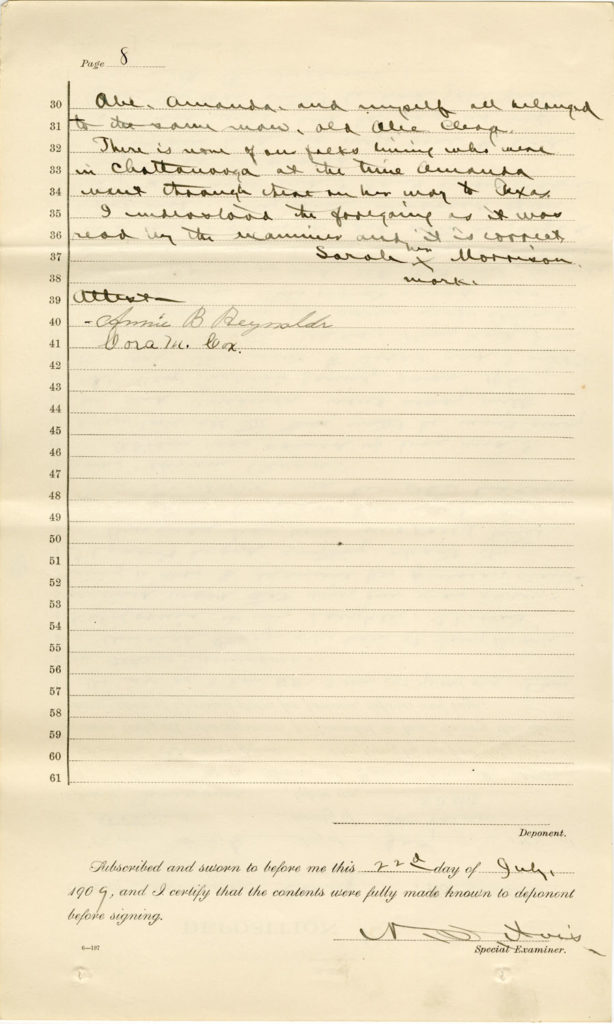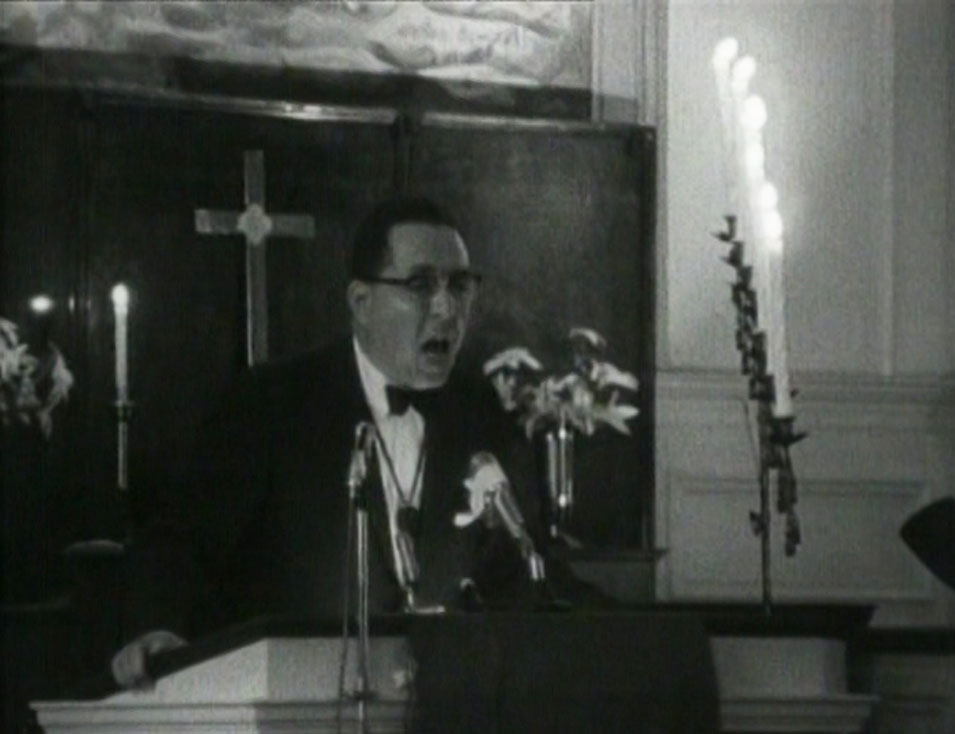
Riot or rebellion?
By Jaramogi Abebe Agyeman
(Rev. Albert B. Cleage, Jr.)
Below is a partial transcription of the sermon delivered above in it’s entirety.
Excerpted from “No Halfway Revolution,” text of a sermon delivered at Central United Church of Christ, the Shrine of the Black Madonna, on July 23, 1967, several hours after the Detroit Rebellion began:
“And Samson said, ‘Let me die with the Philistines.’ Then be bowed with all his might; and the house fell upon the lords and upon all the people that were in it. So the dead whom he slew at his death were more than those whom he had slain during his life” (Judges 16:30).
Our Scripture lesson is taken from the Book of Judges. While the riots were going on down in Watts [in August 1965], I preached on the same text. Samson is a good Biblical figure and he fits into the framework of riots and rebellion.
The Book of Judges has to do with the early leaders of Israel who presided over the young Nation Israel and were called “judges.” Samson was never a leader of Israel in the sense of having an official position. Yet his story is included in the Book of Judges because he was a leader in the fight against the Philistines. …
During this period when Israel was in bondage to the Philistines, Samson was the person people looked to. He was a kind of center, the outstanding personality. Yet he was different from all the other judges, essentially because the times were different. Israel needed somebody like Samson.
I remember when the riot in Watts was going on, the front page of Life Magazine pictured a young black militant with a do-rag around his head. He was a symbol of what was happening. He represented rebellion against oppression.
So I have selected the same Scripture lesson now because that which started in Watts two years ago and which is now sweeping the nation is the same kind of rebellion against oppression which Samson represented in Israel. The same kind of hoodlum character emerges as some kind of peculiar hero because he does the things which have to be done at a particular time in human history.
Samson wasn’t any hero kind of person in normal circumstances. Normally people would have frowned on him. They would have called him a hoodlum. They wouldn’t have listed him in their religious scriptures as a “judge” of Israel. But during this particular time, he had what everybody wanted. He wasn’t afraid, he didn’t mind dying, he was emotional, he struck out against oppression. So everybody called him a judge of Israel. …
A riot becomes a rebellion when people tend to support the little group of people who begin some kind of violence. In America today, we have riots or rebellions taking place in almost every city across the country. …
This is the kind of times in which we live. We had our own riot here in the City of Detroit. Riot or rebellion, you pick your own word for it. I think what we had is a riot. I think it has been participated in by relatively few people — so far.
The radio stations called me and asked if I wanted to issue a statement asking people to cool it. I said I had been trying to get white people to do something that would make it possible to cool it for years, and nobody had paid any attention, so I didn’t have any statements about cooling it now.
I tried to explain that if everything is alright in Detroit, if nobody is alienated, if nobody feels oppressed, if all black people feel that there are other things they can do to change the situation, if they are confident that they have alternatives to violence, then it is just a little thing that broke out and it won’t last for long.
But if all black people in Detroit feel that they are helpless and hopeless, and that there is no chance of solving their problems peaceably, that they can’t solve them by the ballot or by organizing or by economics, then you have a rebellion on your hands — because, in that case, more black people are going to join in, once it has started.
There is a difference then between a riot and a rebellion. A riot is a little group, perhaps more interested in looting than in freedom. But a rebellion is a community that has decided that it will no longer tolerate the kind of racial oppression that it has been forced to tolerate.
So across the country we are getting a combination. In some communities there are riots. Little bands hear about what is happening somewhere else and think it might be good to have one here. And in other communities, it is not a riot at all; it is a rebellion.
People look around and say, we are tired of these slums. We are tired of all the conditions that we have to put up with. We are tired of the whole situation and we are not going to tolerate it any longer. And then a whole community erupts, and other people say, we don’t know why it happened. That is a rebellion. And more and more of these eruptions are rebellions, rather than riots.
Now in any period of rapid social change … you are going to get all kinds of people participating, and everybody who participates is not going to be a great freedom fighter. If you start a fight on a corner because your freedom has been transgressed, there is going to be somebody who comes up just because there is a crowd of people and picks all the pockets he can.
That doesn’t mean that freedom wasn’t involved in the first fight. That just means that somebody else who was broke or knows how to pick pockets utilized the situation.
But when that happens, and we all stand back and say, “there was nothing going on but some people picking pockets,” that isn’t true. And usually that is not true in a community, no matter how much emphasis is placed upon the looting. Usually there are other things that are important to the people. There are people who loot, just as there are people who do every other kind of thing that they want to do for their own personal satisfaction. …
As long as we had a place and we knew where it was (the man had made it for us), and we were afraid to get out of it, there was no possibility of a riot or a rebellion or whatever you call it.
I point this out to show you that there is some good in what is going on. It must mean that a whole lot of black people no longer believe that they “have a place.” And whether you like the expression that this new feeling takes or not, this change is a fact, and that is good.
I prayed for, lo, these many years that there would come a day when we wouldn’t know our place, and if that’s what is indicated throughout the country, that increasingly black people no longer know their place, then I say that is good.
If not knowing our place leaves us for the moment confused so that we do some things that are not constructive in the sense of planned campaigns for freedom, then that is a part of the struggle, an inevitable part of the struggle. …
In a rebellion or riot, a lot of people are concerned about things other than self. I am not talking about the looters now — those who are trying to steal what they can and get it home for themselves. They are just like the middle-class. I am talking about those who are outraged, whether it is a sensible outrage or an irrational outrage, outraged at the indignities that black people have to live with.
Those people strike out not selfishly but because they identify with a group. They identify with black people, and a policeman doesn’t have to shoot them before they are outraged at police brutality. A policeman doesn’t have to beat them over the head personally before they become involved in a reaction against police brutality. …
It is a complex thing, this struggle for freedom. It is so easy after we become involved in a struggle to say, “Well, we have gone far enough now, let’s cool it. I got some of the things I wanted. I got my job, I have been promoted, I got a poverty program job now. Let’s call it all off now.”
But essentially what we were trying to get from the very beginning wasn’t something for you. It was equality for all of us. And when we once started it about 13 years ago, there wasn’t any calling it off.
Now you have been talking all this time about “I want freedom, I would give anything for freedom, I am tired of whitey, I am tired of him being on my back, I want to run my own community.” You have been saying it, but it is harder to say it now because they have fought on 12th Street and it may be on your street soon. It is not over by any means. …
We were all for the people in Newark [during the uprising in mid-July 1967] because we said they were striking a blow for freedom. We said, “Isn’t it wonderful, what they are doing?” And this Sunday some of you say, “Are those Niggers crazy? There they go, just acting a fool, up and down 12th Street, robbing and stealing.”
That’s right. Plenty of them are acting a fool up and down 12th Street. And soon they are going to be acting a fool up and down Linwood Street. They are going to be acting a fool all across town, up and down Dexter, up and down Joy Road.
But that is a part of what you started. You didn’t think you were going to have a rebellion, a freedom struggle, and nobody was going to get hurt, did you? Did you think it was going to go on everywhere else, and they were coming to Detroit in the end and say, “You all are black, too. We are going to give you the things that these other people were fighting and dying for. We are going to give it to you because you all were so good.” It doesn’t happen like that. When it started, it started for everybody.
Some of the people who holler so much about violence had a part in starting it. [NAACP executive secretary] Roy Wilkins doesn’t want to be reminded of it now, but when they started taking these cases to the Supreme Court, when the NAACP won the case to outlaw segregation in schools throughout the South, that was one of the first gunshots of the rebellion.
And Wilkins can say now that he doesn’t like what is happening, but he had a big part in starting it because at that time we didn’t know what we were. We didn’t know what the possibilities were in human life. We didn’t know what we could do. When the Supreme Court said [in its school desegregation decision on May 17, 1954] you have to give equal education, we said if we have to have equal education, there are a whole lot of other things we have to have too.
Martin Luther King said he didn’t believe in a whole lot of things which are now going on. But when he had the bus boycott in Montgomery [from Dec. 5, 1955-Dec. 20, 1956], that was the second shot. When black people started marching in Montgomery and white folks couldn’t stop them, black people all over the country said, “Look here, the man hasn’t got as much strength as we thought he had.” That was the beginning of our changed conception of ourselves, and a changed evaluation of the white man.
Then some people said, “We are not going to ride in the back of the bus anymore.” So we had the Freedom Riders [beginning in May 1961]. The whites burned up busses, they turned them over, they whipped black men and women over the head, but the Freedom Riders didn’t stop. Another shot. The rebellion is going on, people’s ideas are changing. …
A few years ago a black man stepped off the sidewalk in one of those Southern towns if a white man looked like that was what he wanted him to do. When you come from the stage where you step off the sidewalk to the point where you are ready to let police dogs and everybody else try to stop you but you keep on, you have come a long way in your mind. …
Even in Detroit, provincial and backward as we are, we have been thinking differently the last few years. … You remember the Freedom March in Detroit when more than 300,000 black people marched down Woodward Avenue [on June 23, 1963]? What happened at Cobo Hall when we got there is something else.
But we marched in protest, 300,000 of us. Even then, we were in the process of changing. Our thinking was changing. When you start this process, when you start black people deciding that they are going to be equal; that they are going to change conditions; that the white man is not going to keep them in bondage and slavery and oppression; that if be does, he is going to have to do it with force and naked power, then a whole new world is being born. That is what we are in the midst of now.
When Stokely Carmichael [chairman of the Student Nonviolent Coordinating Committee] screams “Black Power,” he is only putting into a phrase the change which has been going on for almost fifteen years. Things had reached the point where the change could be put into a phrase. And so Stokely said “Black Power,” and everybody screamed “Black Power,” and the white man said — “uh-uh.”
Then the white man began to ask, “What is Black Power, what do you mean? What is the philosophy of Black Power?” But the white man knew that some big and basic change had already taken place, or Stokely Carmichael could not have cried “Black Power” and gotten a Black Power response.
This is the kind of thing that we are in the midst of everywhere in these United States. You look at the paper now and you wonder at the places that rebellions or riots are breaking out. Little communities that don’t have enough black people for you to feel comfortable in are fighting — 3,000 in a community of 80,000, and they are tearing up the town.
But those 3,000 have been systematically mistreated and oppressed, and when they get ready to strike back, they don’t always care whether they win or whether they lose. This we have got to understand.
Most of you are rational. You are for freedom, for justice, for equality. You make rational decisions, you are going to fight in a rational kind of way, you realize that there are certain things you can do.
But you know this freedom thing is exploding in people’s heads. And everybody is not going to be rational about it. When someone decides, “They have been mistreating my momma and my grandmamma, they have been mistreating all of us, and I don’t like it,” they are not all going to be rational about it. …
Everything that happens in a rebellion is not sensible. … You try to give at every step a sensible alternative to violence, as we do here at the Shrine of the Black Madonna. We believe in political action. Now a lot of black people say, “I don’t care about political action, that is just the white man’s bag.” Well, that is what they think.
We have got to try political action because that is an alternative to violence. We have got to use picket lines, boycotts, all the things that offer the possibility of power without the necessity of violence. We try to do those things. That doesn’t mean that at the same time we look with disdain on these other people who are fighting in this country for the same cause that we are fighting for.
We have got to understand that it takes all kinds of people to fight a rebellion, and a lot of them are not going to be doing it the way you are doing it at any single moment. And a whole lot of people are not going to agree with the way you are doing it, either.
It won’t be too long before they will be calling you “Uncle Tom,” because unless you throw a brick you are an Uncle Tom. That would be a logical development, wouldn’t it? But you understand why people do what they do.
Because essentially we are trying to get free and we want justice and we are no longer talking about love and all those other things that cluttered up people’s minds for so long. We want justice and we are going to fight for it. But there are a lot of ways to fight. Because we fight one way, let’s not join in some universal denunciation of people fighting in some other kind of way.
The rebellion goes on. There is no halfway revolution. When it starts, it is going to go to its logical conclusion. Either we get free or we end up in concentration camps. You can understand that. There is no turning back, no stopping. You may wish you hadn’t started, but you did. It is going on and there is no way you can stop it. You can try to utilize reason, you can channel power, but you can’t stop it. …
For years now we have been engaged in a process of trying to break the black man’s identification with the white man, so that a black man says, “I’m a black man and I am not ashamed of it. I am a black man and I don’t feel I have to go along with anything the white man says.” …
The times determine our heroes. Recall, again, in the Book of Judges, how Samson was considered one of the judges of Israel because he lived at a time when they needed that kind of person, fearless, strong, with a deep hatred for the enemy. And how Samson fought. And remember the end of the Scripture lesson this morning.
Sometimes you wonder, “What are they trying to do, what do they hope to accomplish?” Remember when Samson was in the Temple and the Philistines were all around, making fun of him, robbing him of his dignity. They brought him out because be symbolized the enemy whom they had fought against, the enemy who had humiliated them so many times. …
And a little boy brought Samson out and put him in between these two big pillars that held up the Temple. His hair had begun to grow back because he had been down in the dungeon so long, and with it his strength returned. He asked the little boy to put his hands on the two pillars because he couldn’t even see. They had blinded him. And the little boy put his hands on the pillars so Samson could support himself. And when Samson got his hands on the pillars, he knew what he was going to do.
You may not like it, you may not agree with it, but Samson spoke right out to God about it. “Let me die with the Philistines. Oh God, that I may be avenged upon the Philistines for one of my eyes.” You have to understand that indignation, anger, hatred, all of them stemming from systematic oppression, can develop to the point where an individual says, “I am willing to die if I can take a whole bunch of them with me.”
That is what Samson said. I am not quoting from anybody in Detroit or Newark. That is the Bible. “‘Let me die with the Philistines.’ Then he bowed with all his might and the house fell upon the Temple and upon all the people who were in it. So the dead he slew at his death were more than those he had slain during his life.”
This you are going to have to understand because this is a part of the rebellion. There are people like this in Detroit, Newark, Birmingham, California, New York, Chicago who are willing to destroy even themselves if they can express antagonism, if they can strike out against oppression. So to the Hebrew people, the Jews, Samson is a great hero.
Who knows but that a hundred years from today we may remember as heroes some of these very individuals we call hoodlums today, who are striking out for freedom? We don’t know. But they fight for freedom in their way and we in ours, confident that God will see that freedom comes. …
(Source: Albert B. Cleage, Jr. The Black Messiah [Kansas City, Kan.: Sheed Andrews and McNeel-Universal Press Syndicate, 1968], pp. 122-28)
Edited by Paul Lee
Other posts relating to the Detroit Riot/Rebellion
Rebellions Create Strange Leaders Sermon from the Sunday after this one, June 30, 1967 and historical context provided by historian Paul Lee
Link to the journal I kept during the riot -> Detroit Rebellion Journal – 1967
